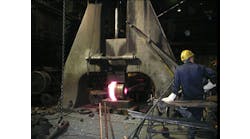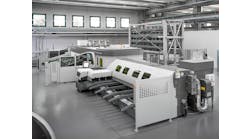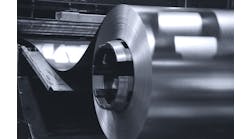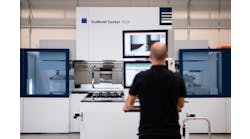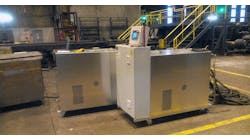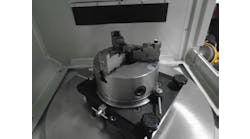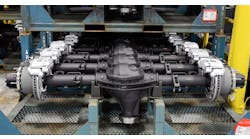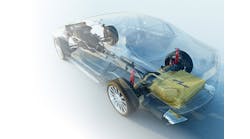Alcoa Defense, in a joint collaboration with the U.S. Army, has manufactured the world's largest single-piece forged aluminum hull for combat vehicles.
At the time the project was announced, Dr. Ernest Chin of the Army Research Laboratory said the collaborative effort had the potential to be a "game changer for how combat vehicles are designed and made to better protect our soldiers."
The hull was made at its Cleveland Works plant, using Alcoa's 50,000-ton forging press -- one of two heavy closed forging presses of this size in the United States.
The plant was originally built in 1917, where aluminum castings were made in World War I and later in World War II.
The 12-stories-tall press embodies the history of that operation, and now that it’s been rebuilt after a three-year, $100-million redesign program, the “50” is emblematic of the ingenuity of the designers, technicians, and operators Alcoa believes distinguish it as a manufacturer of critical parts.
Enhancements to the 50,000-ton press cost about $100 million, including a $16 million aid package from the state. The rebuild started in 2009 and was completed two years later.
In rebuilding and redesigning the machine, Eric Roegner, president of Alcoa Defense, said the company upgraded its controls so the new press is more powerful and more precise than the machine it replaced. Titanium parts are preheated to as high as 1,700 degrees Fahrenheit.
"This press is material agnostic, meaning that it can forge aluminum, titanium, nickel and steel products which is quite unique. Many presses forge only one of those materials," said Roegner who is also chief operating officer of Alcoa Investment Castings, Forgings and Extrusions.
"It's the most advanced and sophisticated 50,000 ton press in the world," said Roegner. "Using our materials expertise and ability to forge the world's largest aluminum structures, we moved this idea from concept to reality in record time, and we're already looking into forging other parts of combat vehicles."
While the top half of a tank is very well armored, the lower half is not as well protected. The rear and side armor of the hull tend to be weaker, because they're typically made with multiple pieces joined together. The single-piece hull will provide much greater defense against Improvised Explosive Devices.
The newly created hull is being blast-tested in Maryland now to determine durability. Alcoa said the hull is expected to provide about two times better blast protection than traditional hulls. And while testing will continue for the next several months, Alcoa is encouraged by early results. The development is six months ahead of the 18-month-schedule announced jointly last year by both Alcoa and the U.S Army.
Roegner said he's encouraged by opportunities to make many more parts for other military applications and vehicles.
"This forge and the capabilities we have really are unique," he said. "There's significant opportunities to grow."

